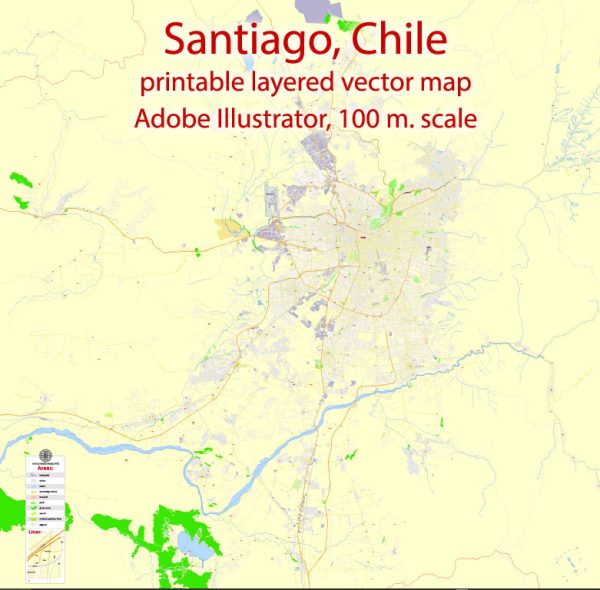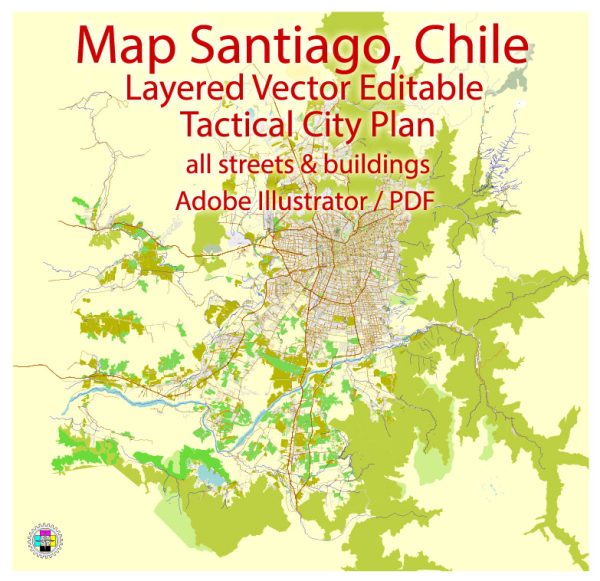Santiago, the capital of Chile, boasts a diverse and intriguing architectural landscape that reflects the city’s history, culture, and urban development. Here’s a brief description of the architecture in Santiago, Chile:
- Colonial Architecture: Santiago’s architectural heritage includes well-preserved examples of colonial architecture. Buildings from the Spanish colonial period, dating back to the 16th century, are characterized by their adobe and mud brick construction, red-tiled roofs, and ornate wooden balconies. The historic district, Barrio Concha y Toro, is a notable area with well-preserved colonial architecture.
- Neoclassical Influence: In the 19th century, neoclassical architecture became popular in Santiago, reflecting European design influences. Buildings such as the Palacio de la Moneda, the Chilean presidential palace, exhibit neoclassical elements like grand columns, pediments, and symmetrical facades.
- Beaux-Arts and Art Nouveau: The late 19th and early 20th centuries brought a wave of Beaux-Arts and Art Nouveau architecture to Santiago. The Palacio de Bellas Artes is a prime example of this style, featuring intricate detailing, ornate facades, and decorative elements.
- Modernist and Brutalist Architecture: Santiago experienced significant urban development in the mid-20th century, which resulted in the construction of modernist and brutalist buildings. These structures often feature clean lines, geometric shapes, and the use of concrete and glass. The Edificio Telefónica and the Metropolitan Cathedral are notable examples of modernist architecture.
- Contemporary Architecture: In recent decades, Santiago has seen a resurgence of contemporary architecture. Many architects and designers have incorporated sustainable and innovative design concepts into their creations. Prominent contemporary buildings include the Titanium La Portada, a distinctive glass skyscraper, and the Bicentennial Park with its modern pavilions.
- Cultural and Artistic Centers: Santiago is home to several cultural and artistic centers with unique architectural designs. The Gabriela Mistral Cultural Center (GAM) and the Museo de la Memoria y los Derechos Humanos are notable for their contemporary and innovative architectural styles.
- Housing and Neighborhoods: Santiago’s residential architecture varies from high-rise apartment buildings in modern areas like Las Condes to traditional, colorful houses in neighborhoods like Barrio Brasil. The city’s housing reflects a wide range of socioeconomic backgrounds and architectural styles.
- Street Art and Murals: Santiago also has a vibrant street art scene, with colorful murals and graffiti adorning many city walls. These art pieces contribute to the city’s unique visual appeal and cultural expression.
- Seismic Considerations: Due to Chile’s location along the Pacific Ring of Fire, Santiago’s architecture often incorporates seismic-resistant features to withstand earthquakes, which are relatively common in the region.
Overall, Santiago’s architecture is a blend of historical, colonial, European-influenced, modernist, and contemporary styles. The city’s architectural diversity reflects its evolving cultural, economic, and social dynamics, making it an exciting and visually captivating place for architecture enthusiasts and visitors alike.



 Author: Kirill Shrayber, Ph.D.
Author: Kirill Shrayber, Ph.D.